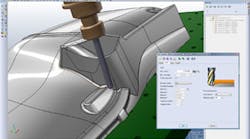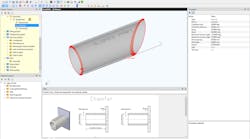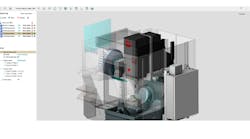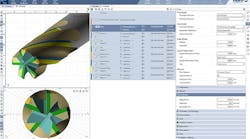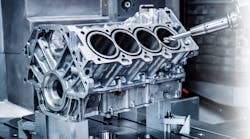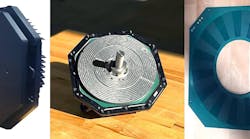Volatile fuel prices have forced aircraft builders to make weight reduction a design priority, and reducing the weight of aircraft seating is an effective way to reduce jet fuel consumption and CO2 emissions throughout the service life of the plane. DeltaCAD Ltd., an English start-up company that specializes in CAD/CAM services, collaborated recently with a subcontract tooling manufacturer to provide an aerospace supplier with aluminum tooling for a carbon-composite seat shell for a civilian aircraft project.
Dean Challis is a design engineer with CAD/CAM and tool design experience, and through DeltaCAD Ltd. he provides design and manufacturing services ranging from 2D drawings to 3D modeling and CAM programming. For this project, the customer provided the original CAD model as a Unigraphics NX file, and the part analysis and tool design was performed using VISI Modelling from Vero Software.
Vero Software designs and develops CAD/CAM/CAE software for design and manufacturing, notably for plastic injection molding and progressive die forming.
"VISI is very tolerant of non-native data,” Challis explained. "When models are originally designed, the manufacturing requirements are not always known. To make a part manufacturable, it is vital to interact with the data and make the relevant changes. In regard to these particular components, and with authority from the original design team, the tooling was modified to remove undercut areas and apply blend radii on sharp edges.
“Typically,” he continued, “blending can be a very complex task and it is often necessary to ‘explode’ a model into surfaces and manually apply the CAD modifications. VISI is very strong at switching between solid and surface environments, and this allows us to make complex changes where other CAD systems often fall over."
The tooling was manufactured by Casting Support Systems Ltd., a company that supplies large tooling to investment casting, plastic molding, and gas turbine manufacturers. In conjunction with its sister company Versa-tote, it also designs and manufactures returnable transit boxes for warehouse and distribution centers across Europe.
All toolpaths were programmed with VISI Machining and the aluminum tooling was milled using XYZ 1060 high-speed vertical machining centers running Siemens 840D ShopMill Control, with WNT solid-carbide end mills that have been designed to cut softer materials like aluminum. The geometry of the tooling makes it possible to cut full slots to 1.5×D depth with high feed rates, typically twice that of traditional steel cutting tools. The tooling life for the cutters is approximately 3,000 hours.
The entire multi-surface tool was manufactured and assembled in just nine days, partly due to optimal toolpath usage and running multiple jobs at the same time.
Sam Cox, Casting Support Systems’ tool room foreman, explained: "Complex tools often contain a number of sub inserts where the setup time is disproportionate to the actual CAM runtime. To overcome this obstacle, we set up a number of individual jobs located around a single datum, which run overnight for lights-out machining. Although the machine can run at optimal production rates, we back off when running overnight to protect tool life. We use VISI to accurately predict the actual toolpath cutting time and program accordingly. A typical set of overnight programs will run for up to 14 hours."
Carbon fiber material is lightweight but has high tensile strength and low thermal expansion, so it’s popular with designers of aerospace, civil engineering, military, and sporting goods equipment.
The carbon fiber material used by Casting Support Systems was a 2×2 twill-weave cloth impregnated with epoxy resin, so that when the tool is brought up to temperature (120-140°C, depending on the resin) the resin cures within an hour, approximately. Then, the tool is cooled as quickly as possible and the top half of the tool is removed, exposing the carbon fiber molding.
The complete multi-insert tooling was assembled and sent to the tooling manufacturer for lay-up and production. The final carbon fiber component (measuring 700 mm×68 0mm×460 mm, weighing only 5.25 lbs) was “right first time,” having virtually no visible “split line definition.”
Although Casting Support Systems Ltd. already has in-house CAD/CAM capability, director James Head acknowledged the benefits of DeltaCAD’s design expertise, and maximizing the use of VISI Machining. "The combination of Dean and VISI has catered for many additional requirements and has in fact exceeded our expectations. Vero have provided a powerful, cost effective solution for the design and manufacture of complex tooling," Head observed.
